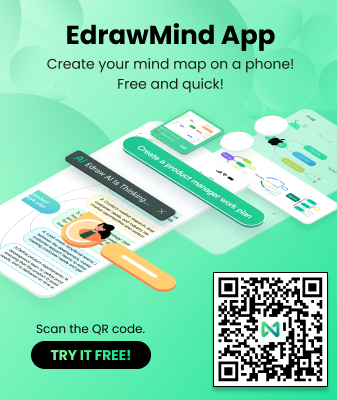Complete Guide to Using Mind Maps for Curriculum Planning

Curriculum planning has been used from primary education to higher education to coordinate, schedule, and view information for whole classes, courses, and topics. This article will explore how to use mind maps and examples of mind maps for curriculum planning.
Curriculum planning is a method for the standardized, hierarchical representation of the interrelationships between various curriculums and school activities. A mind map displays the complex network of these partnerships and illustrates essential concepts or domains.
Mind maps show the main areas that can be addressed across grade levels, from sport and wellness to various activities. Mind maps can help decide which activities to keep or delete at specific grade levels in a curriculum plan. While also researching and establishing the critical ideas that will raise concerns regarding the mechanism and structure.
Curriculum planning can be an entertaining and imaginative activity for some teachers. Whereas the exact opposite for some teachers. Whether they love it, dislike it, or are utterly frustrated and exhausted by the idea of it, they would certainly all understand that designing a program is a time-consuming task that needs a lot of thinking and effort.
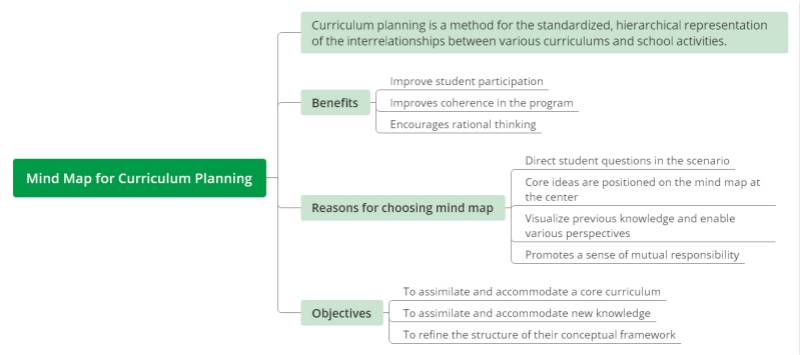
Source: EdrawMind
1.1 The Benefits of Curriculum Mapping
- Improve student participation
Develop and review standard-compliant curriculums. Curriculum mapping program is a versatile tool built for teachers to allow ongoing learning progress and maximize student’s success.
- Improves coherence in the program
It helps in developing a holistic program for the students, rather than an only study focussed environment.
- Encourages rational thinking
It also helps in developing a better understanding of the student’s time. Therefore minimizing burdening them under assignments and tests and creating an appropriate learning environment.
1.2 Reasons for Selecting Mind Map as The Visual Tool
Mind mapping can be selected as the visual method to direct student questions in the scenario. Mind maps can be described as radial structures that allow for the graphic organizing of concepts in divisions.
Core ideas are positioned on the mind map at the center as they represent the highest level within the hierarchical system. Subordinate principles are placed on sub-branches, reflecting the next step of the hierarchy of ideas. Concepts representing information and illustrations will be put in the mind maps on subsequent stages.
Mind mapping facilitates the development of questions by visualizing previous knowledge and enabling various perspectives. Mind mapping is ideal for prior knowledge simulation, as it facilitates brainstorming and information sharing.
Mind mapping promotes a sense of mutual responsibility by visualizing the collective creation of awareness of the students. Within a typical mind map, all student questions can be visualized either as a section or as a hypertext reference in a digital mind map.
They also help visualize how and to what degree the student questioning was successful and the impact of the core curriculum. Teachers should use mind maps to track and assess individual knowledge creation, since creating a mind map involves remembering the principles of the student’s awareness in a visual context of the subject.
1.3 Measuring Curriculum Objectives in Mind Maps
The curriculum objectives can be:
- To assimilate and accommodate a core curriculum as a conceptual framework of understanding;
- To assimilate and accommodate new knowledge produced by all classroom questions within this conceptual framework of understanding;
- To refine the structure of their conceptual framework of understanding as an indication of the growth of expertise.
The measurement of these curriculum objectives can be defined as the extent and impact of curriculum planning. The measure can then lead:
- Studying a core curriculum;
- Improving this core curriculum;
- Enhancing the logical basis of their awareness as teachers direct student questions through a scenario guided by a mind map.
An example of a mind mapping tool for curriculum planning is EdrawMind, with its easy-to-use software interface.
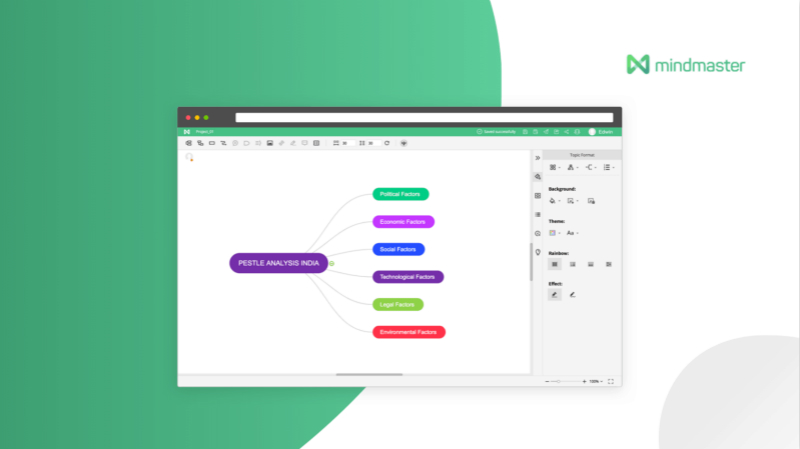
Source: EdrawMind
- Presentation
Visualisation is the most powerful way to explain ideas and to communicate information. With EdrawMind's built-in display feature, you can turn mind maps into stunning, immersive slideshows. When you have finished the process, you can export the slides as an editable PPT or PDF format.

Source: EdrawMind
- Team ,amp; Collaboration
The curriculum plans can be communicated to all dynamically and in real-time when collaborating with a group or external collaborators. It is at the discretion who can edit, view, or comment on the mind map.
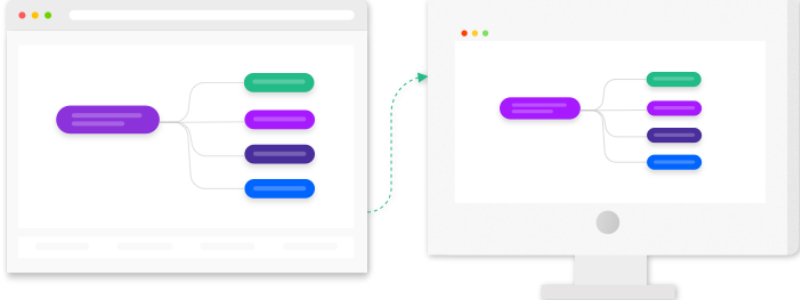
Source: EdrawMind
- Smart Layout
EdrawMind does the rest while you concentrate on the thought process. The intelligent interface keeps all the divisions in place.
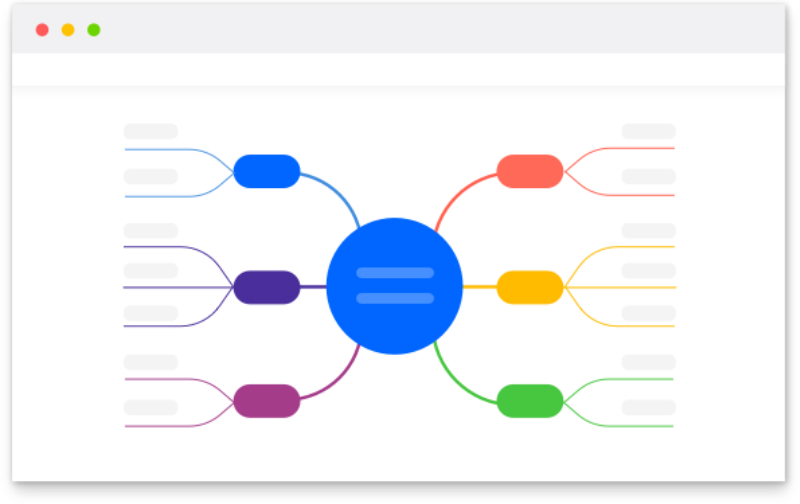
Source: EdrawMind
Step 1 Open EdrawMind on your desktop or laptop, and select a blank canvas.

Source: EdrawMind
Step 2 Type your context and use the wide range of symbols from the libraries available to create your curriculum plan mind map.

Source: EdrawMind
Step 3 Save and export your diagram to any file type you wish to. EdrawMind is compatible with multiple file types like Office, PDF, Evernote, and graphic files.

Source: EdrawMind
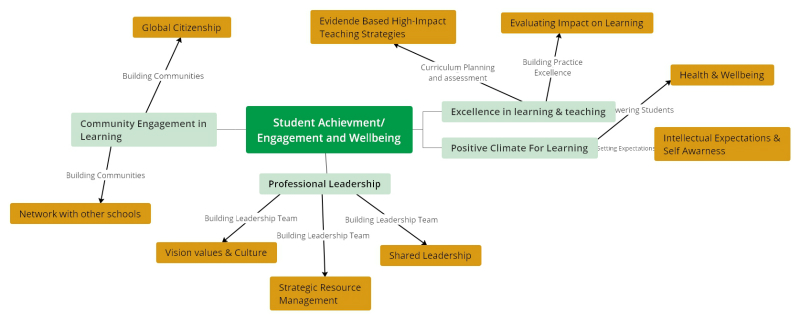
Source: EdrawMind
This example of a mind map for curriculum planning, student achievement, engagement, and well-being is the core idea. The curriculum covers critical sectors like a positive climate for learning, professional leadership, community engagement in direction, and excellence in learning and teaching.
The curriculum plan is a mechanism of continuous development and change. It requires a lot of experimentation and trial and error. Since what may perform well for one group of students will miserably fail for another, and the strategies effectively implemented by one instructor may not be a suitable match for another class.
Using mind mapping to check the understanding of a program for students is a relatively recent approach.
EdrawMind is an easy-to-use, flexible mind mapping tool designed to help you generate modern, fresh visuals and mind maps. By combining the bullet points into a mind map on a project, EdrawMind lets you organize the thoughts or concepts visually appealing and detailed-oriented.






